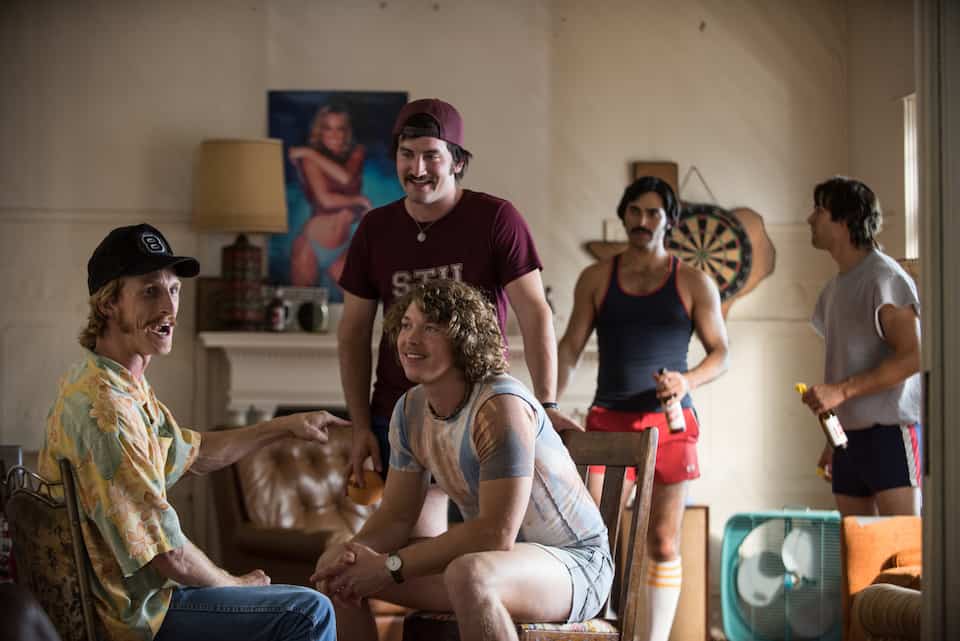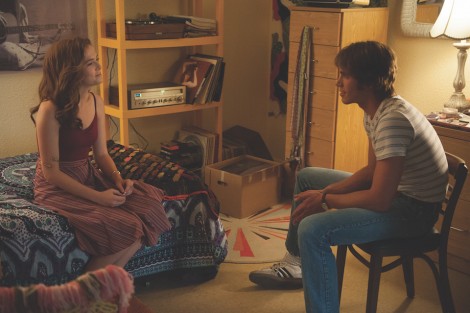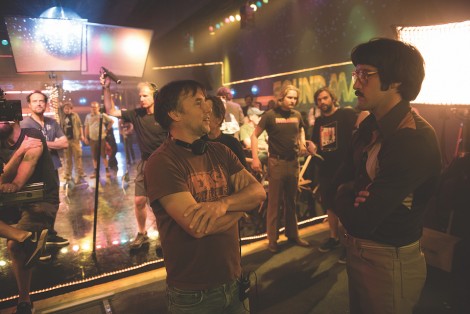“College is more fun than high school. Something’s wrong with you if it’s not.” These are the words of Richard Linklater, the Oscar-winning filmmaker responsible for Dazed and Confused (1993), Boyhood (2014), and the Before series. Linklater is best known for his Americana coming-of-age indie movies and his reflections on high-school and college clearly explain why.
Prior to Linklater’s talk at Innis College on March 24, I interviewed the acclaimed director in a swanky Paramount Productions suite at the Shangri-La Hotel. For a filmmaker whose career is prefaced on low-budget independent films — a genre practically born out of desire to be anti-Hollywood — it’s a rather ill-fitting place to meet.
Linklater’s films are known for their collages of people and personalities. The American director possesses a unique storytelling ability that makes for a perceptive interpretation of suburban American culture; it offers realistic renditions of the emotional and psychological musings that plague the characters. He’s currently on tour to promote his latest film — about a group of college baseball players navigating the freedom of adulthood — entitled Everybody Wants Some!!
“College was all about the freedom”
“It was kind of monolithic,” says Linklater, describing the story-world of his latest film. “The world that Jake [Blake Jenner] finds himself in is a bunch of athletes living in these houses, and college can be kind of segregated that way, whether it’s your major or your roommates, or you know, girls dorms [or] boys dorms.”
He describes the college comedy in contrast to his earlier high school comedy, Dazed and Confused. “High school felt like you were all on top of each other. Not necessarily in a good way, but college was all about freedom. In a way, it’s just a different story-telling mechanism, I guess.”
As a storyteller, Linklater produces narratives with an autobiographical tone, which creates an element of intertextuality throughout his body of work. Everybody Wants Some!! continues this tradition. As the “spiritual sequel” to Dazed and Confused, the film captures the zeitgeist of the 70s and 80s. Much like its predecessor, it boasts an all-American, blue-jeans-and-biceps-sensibility.
“It’s personal. I was in high school in the 70s; I was in college [in the 80s]. But you know, the amateur anthropologist in me was thinking ‘Okay, so what was different and how do people change? How do they stay the same? How does the culture shift?’ It’s all fun to do; it’s sort of the magic of cinema. Cinema is really powerful that way. You can recreate a moment in time and try to get it exactly right,” Linklater explains.
His personal attachment extends to the political state of the time period. “It was kind of apocalyptic. The Reagan Era was negative in a lot of ways; we didn’t know it at the time. You never think things are going to go backwards, but they really did. It really felt that way as a young person,” says Linklater.
From film to digital
For a long time, Linklater was a self-proclaimed “film purist” — a filmmaker that avoided using modern cinematic technology at all costs. His latest film, however, embraces digital technology.
“We shot it on an [Arri] Alexa [camera], which is digital,” says Linklater. “I was a film purist for as long as I could be, and then I just liked this one Arri camera [that] I’ve used for three movies. I like it. It’s not a big deal.”
The switch to digital technology, however, took some time. “I did it kind of slowly. I went back and forth a little bit. I shot some digital and I finished a film and I think Boyhood was [shot] in film.”
Ultimately, the technology aspect of the cinema is of little importance to Linklater. “All the technological elements to me are just — they’re just tools to help with your storytelling. I don’t think you can be too adamant about one thing or another. Film has always been a practical medium, you know? Often you have people on low budgets just trying to make it work. Whatever’s practical for the time period you’re shooting your movie [in]. That’s what it’s always been.”
He notes that “a lot of people obsess over [technology], thinking that’s the key [to the movie industry], where it’s really not.” Linklater has seen crucial developments in film technology over the course of his career, including the maturation of CGI, while moving from the grassroots stages of Boyhood to its release 12 years later.
“I think all technology is there to help us communicate, in all facets,” he notes. “As a storyteller it’s quite a helpful tool, but I think that you can’t use it as a crutch. You can’t use it as a short cut, you still have to do the hard work, and if it’ll help you, all the better. But it still comes down to what you’re trying to express. The technology is a really small part of it.”
Cinema as a reflection of our lives
In films like Boyhood or Dazed and Confused — which take place over the course of 12 years and two days respectively — Linklater “hinges on the timeframe and ongoing moment-to-moment reality” that allows him to eliminate the traditional narrative sense of plot.
“The traditional ‘set something up, create a conflict, and pay it off’ [narrative]… feels kind of false to me. That’s not how most of us go through our lives. It’s just kind of this moment-to-moment reality that we’re all living through. So I’ve always tried to mirror that somehow,” he explains.
Ultimately, Linklater sees his movie-making style in a simplistic way. “Storytelling is storytelling,” he says. “It comes from anywhere.”




